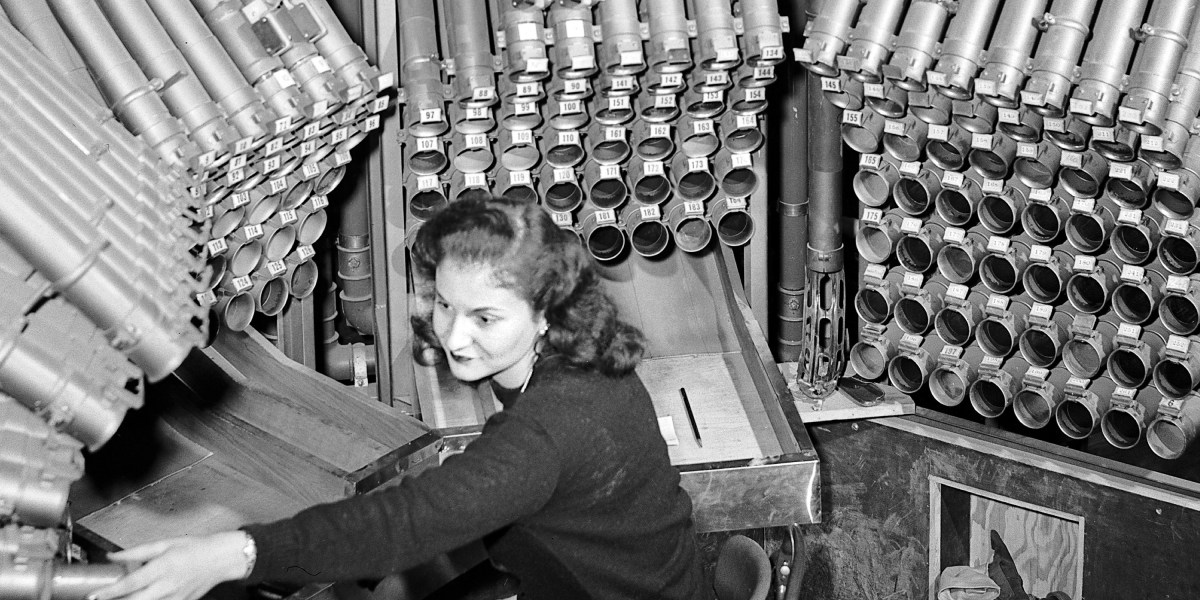- cross-posted to:
- technology@lemmy.world
This is the best summary I could come up with:
In science fiction, they were envisioned as a fundamental part of the future—even in dystopias like George Orwell’s 1984, where the main character, Winston Smith, sits in a room peppered with pneumatic tubes that spit out orders for him to alter previously published news stories and historical records to fit the ruling party’s changing narrative.
“The pneumatic tube system of communication is, of course, in use in many of the downtown stores, in newspaper offices […] but there exists a great deal of ignorance about the use of compressed air, even among engineering experts.”
Electrical rail won out over compressed air, paper records and files disappeared in the wake of digitization, and tubes at bank drive-throughs started being replaced by ATMs, while only a fraction of pharmacies used them for their own such services.
It just makes too much sense to not do it,” says Cory Kwarta, CEO of Swisslog Healthcare, a corporation that—under its TransLogic company—has provided pneumatic tube systems in health-care facilities for over 50 years.
As computers and credit cards started to become more prevalent in the 1980s, reducing paperwork significantly, the systems shifted to mostly carrying lab specimens, pharmaceuticals, and blood products.
Steven Fox, who leads the electrical engineering team for the pneumatic tubes at Michigan Medicine, describes the scale of the materials his system moves in terms of African elephants, which weigh about six tons.
The original article contains 1,689 words, the summary contains 230 words. Saved 86%. I’m a bot and I’m open source!
TLDR - They never went away, they’re useful in hospitals

